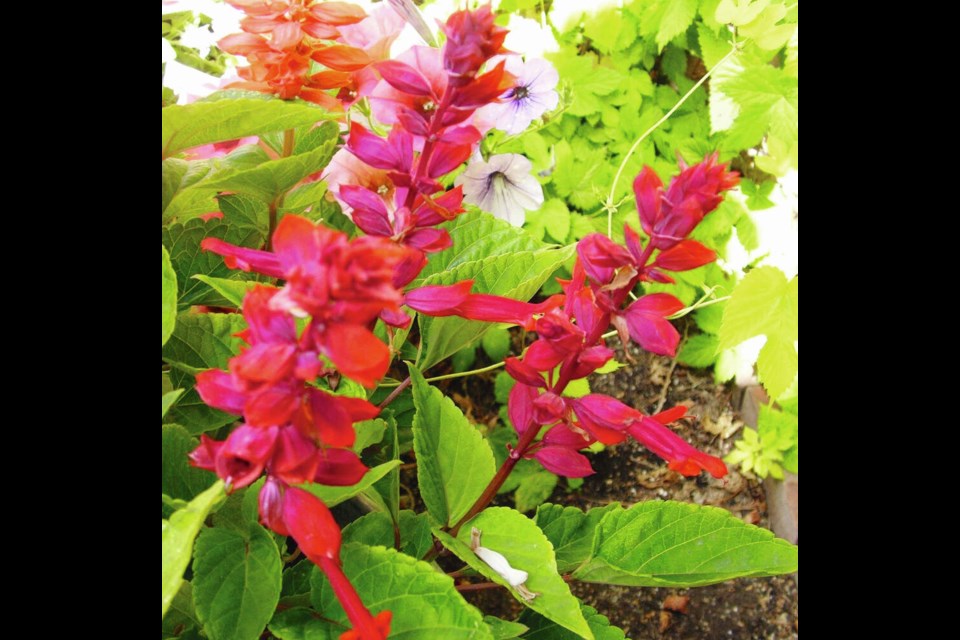Dear Helen: For the past two months, my camellia has been dropping green leaves. Some flower buds have dropped, too, but that happens every year. The plant has never dropped green leaves like this before.
R.S.
It is normal for evergreen shrubs and trees to shed old leaves after they yellow and then turn brown and dry. That’s how the plants renew themselves.
Temperature extremes, especially if they happen abruptly, will cause camellias and other broad-leaved evergreens to drop green leaves. I suspect the mid-January extreme freezing that brought one night of -10 to -12 C temperatures delivered the damaging shock to your camellia.
This is not usual in our climate, and the sudden extreme freezing followed an extended period of unusually warm temperatures that had prompted budswell to begin in some plants. The warmth certainly set plants up for potential damage from sudden extreme cold.
Your camellia should recover. A generous mulch layer using a nourishing compost spread under and around the plant, but not up against the trunk(s), will give the plant a boost.
Dear Helen: Have you ever planted fall rye as a “green manure” crop? Once it is up and growing in early spring and is still short at around 10 cm, is that the time to dig it into the soil?
D.H.
It’s been quite a few years since I planted fall rye as a soil builder. Previously, I planted it over emptied plots every autumn. My problem with it was that the plants never fully composted into the soil in the spring after being dug under, certainly not in time for spring planting where the rye had grown. I always ended up having to haul the lifted plants to compost heaps. Fall rye needs to be dug under when it is still very small and succulent.
Another key issue is that now we are admonished to avoid continuous disturbance of the soil by regular “digging over.”
In recent years, instead of planting a green manure, I cover emptied vegetable plots with a generous layer of leaves for the winter to protect the soil from erosion and general weathering. I always find the uncovered soil in the spring to be in beautiful condition. In preparing uncovered plots for planting, a generous layer of compost helps to boost the soil’s fertility and tilth.
Dear Helen: A fence replacement project has led to the need for clearing and raking an area to remove pieces of the old fence wood. I’m not sure what to do with smaller chunks of partly decomposed wood in the soil. Will they cause a depletion of nitrogen in the soil as they complete the decomposition process? The soil is like compost, dark and rich-looking. I grow squashes and pumpkins in the area, with great success.
J.M.
I often come across bits of wood in the soil of my beds. Often, they are ends of old wood stakes that have rotted off. If they are fairly shredded and crumble easily in my fingers, I just scatter them around where I am working. If they are fairly solid, I put them in a bucket used for wood bits for burning in the wood stove in winter. Some lumber, and wood waste in general, can be recycled as long as it is clean, untreated, and not coated with lead paint.
Preparing the soil in your usual routine should be enough for another productive growing season. If you have a concern, make a small trial sowing of something fast to germinate like radish to make sure the soil can yield satisfactory growth.
Dear Helen: Two favourite flowers I used to find seeds for in the Stokes catalogue are Salvia Amore Scarlet Bicolor and Salvia Mojave Red and White Bicolor. Do you know of a source for them? I found seeds for a Hummingbird Coral Nymph salvia (Renee’s Garden Seeds) on a local rack and will try it this year.
M.E.
There are sources for your two desired salvias on the internet, but none in Canada that I could find. Swallowtail Garden Seeds in California lists the Mojave Red and White Bicolor, but their shipping charge to Canada is $13.99 US. The Amore salvia is listed with companies in The Netherlands. Baker Creek Seeds in Missouri has Amore Purple and Amore Salmon.



